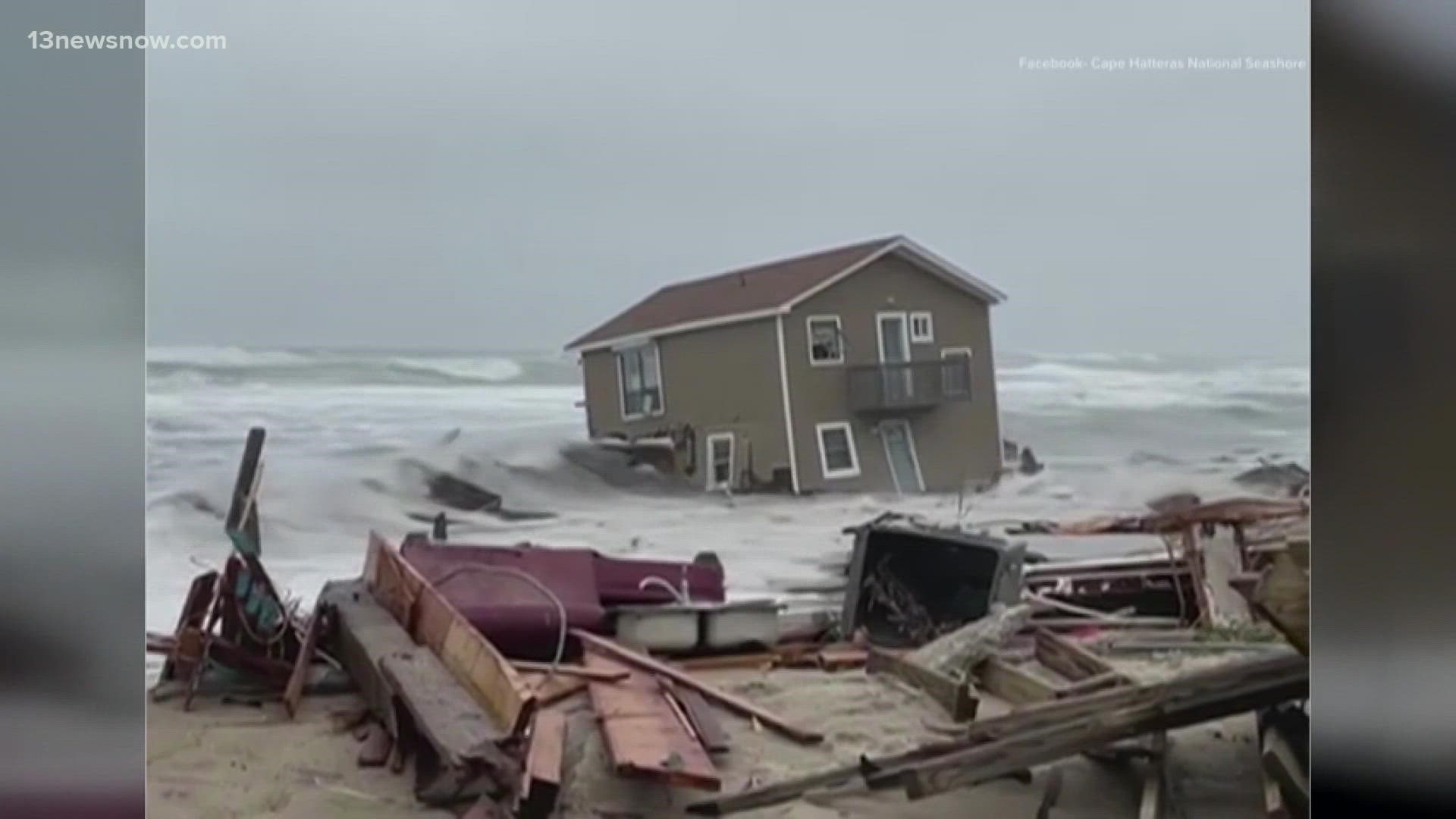RODANTHE, N.C. — The two beachfront homes on North Carolina's Outer Banks that collapsed into the Atlantic Ocean on Tuesday were categorized as "unlivable" by Dare County officials before being destroyed.
“It’s a shame for those people who own those homes. That area is an area of high erosion and it’s something that wasn’t unexpected," said Dare County Manager Bobby Outten.
Outten said homeowners are responsible for paying and cleaning up the damage.
On Wednesday, members with the National Park Service put out a call for volunteers to help pick up large pieces of wood and parts of the home that drifted off into the sea onto other beaches. Officials said the property owners have hired a company to clean up the area near the site of the collapse.
“That’s what occurred on these two houses, the homeowner didn’t do anything, didn’t repair the home, didn’t do anything to prevent it from falling in, and ultimately the ocean took it," said Outten.
Outten said when crews first built the homes, they didn't sit so close to the shore. He said before the collapse, the two homes didn’t meet safe living standards.
“The homes are insured and once we tag the home where it’s not livable then the property owner can’t use the house anymore," said Outten.
Outten said county leaders and park rangers are constantly communicating with people who have houses near the ocean.
“Of course, the homeowners are waiting for them to fall in because that’s how they recover their insurance proceeds and so it's sort of a back-and-forth between that and trying to prevent the debris on the park's beaches," said Outten.
Nikki Duncan is with the Willey Agency, which is an insurance company that has an office on the Outer Banks. Duncan provides recent information regarding flooding insurance... or in this case, when a home collapses into the ocean.
In a statement to 13News Now she wrote:
"Under the National Flood Insurance Program, the maximum amount of flood coverage on a residential structure is $250,000. The maximum amount of personal property (contents) coverage is $100,000. The policy provides coverage for debris removal, but the cost would be paid out of the $250,000 or $100,000 limit. For example, the insured would not be able to collect $250,000 for the loss of the structure as well as additional funds for cleaning up the structural debris. FEMA recently implemented a new rating methodology which is specific to each property and takes into account several factors to determine the premium, including the cost to rebuild, elevation, and distance to a water source. More info: https://www.fema.gov/flood-insurance/risk-rating
"Flood policies also provide Increased Cost of Compliance (ICC) coverage, which will pay up to $30,000 to raise, relocate, floodproof, or demolish a structure. That coverage is only available when the structure is deemed a repetitive loss property or had flood damage that equals or exceeds 50% of the structure’s market value. NFIP flood policies do not provide loss of use or loss of rental income coverage."
Outten said county leaders have a beach nourishment program to help build seashores to prevent erosion on the Outer Banks. But, he said Rodanthe does not qualify for the service.
“In order to get a permit to do nourishment you have to be trying to protect critical infrastructure like a road or highway, which is what we’re doing in Buxton and Avon. But in Rodanthe, we can't say we’re doing that because there’s a bridge that goes around that area," said Outten.
Outten hopes other homeowners on the Outer Banks take this as a lesson to prevent another collapse.

